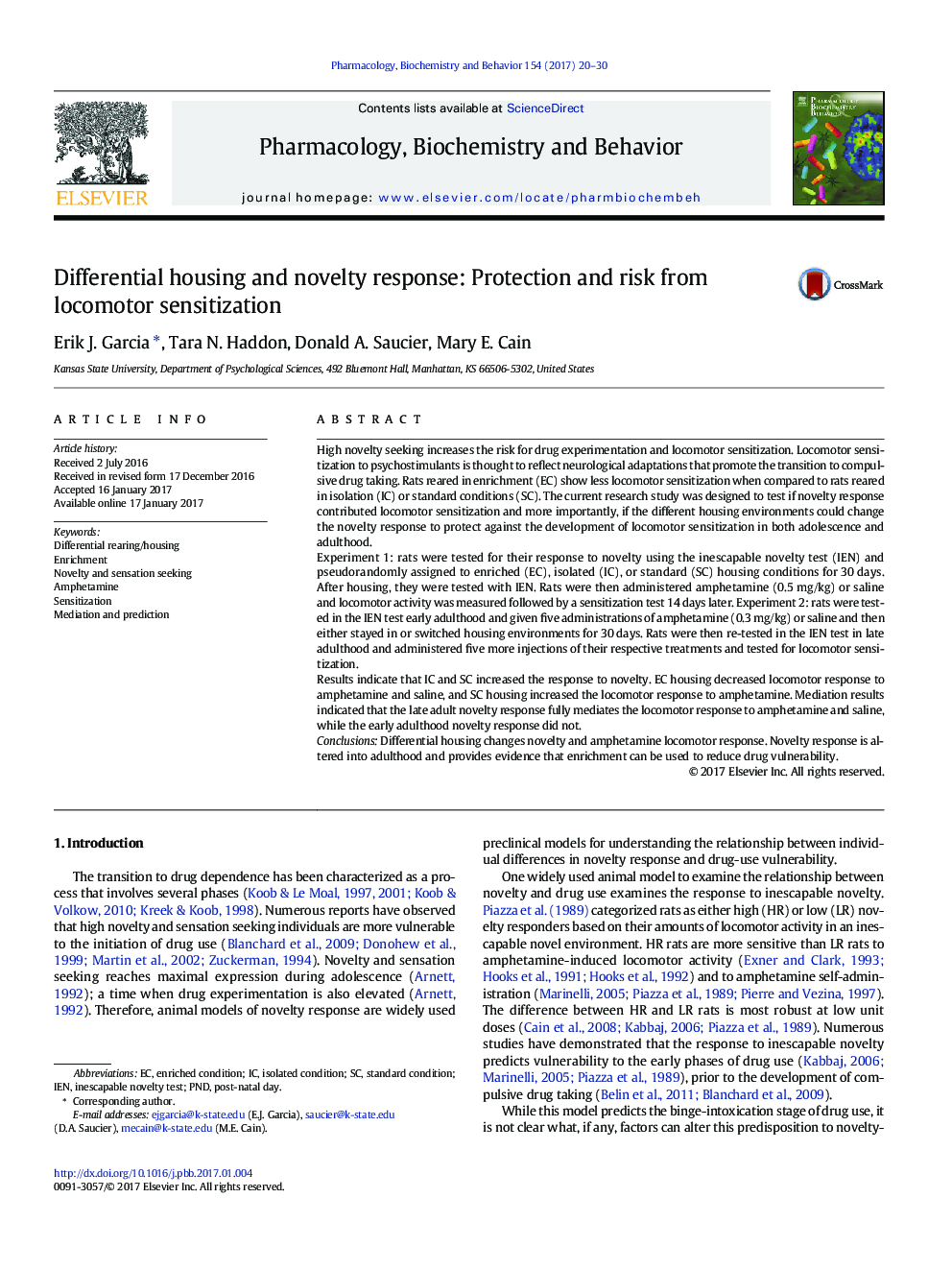| کد مقاله | کد نشریه | سال انتشار | مقاله انگلیسی | نسخه تمام متن |
|---|---|---|---|---|
| 5515206 | 1541833 | 2017 | 11 صفحه PDF | دانلود رایگان |
- Isolation and standard housing increase the novelty response.
- Higher novelty response resulted in greater amphetamine-induced hyperactivity
- Enrichment reduces the novelty response and blunts amphetamine-induced hyperactivity.
- Switching isolated rats to enriched reduced novelty and amphetamine responses.
- Housing-induced changes to novelty mediate amphetamine-induced hyperactivity.
High novelty seeking increases the risk for drug experimentation and locomotor sensitization. Locomotor sensitization to psychostimulants is thought to reflect neurological adaptations that promote the transition to compulsive drug taking. Rats reared in enrichment (EC) show less locomotor sensitization when compared to rats reared in isolation (IC) or standard conditions (SC). The current research study was designed to test if novelty response contributed locomotor sensitization and more importantly, if the different housing environments could change the novelty response to protect against the development of locomotor sensitization in both adolescence and adulthood.Experiment 1: rats were tested for their response to novelty using the inescapable novelty test (IEN) and pseudorandomly assigned to enriched (EC), isolated (IC), or standard (SC) housing conditions for 30Â days. After housing, they were tested with IEN. Rats were then administered amphetamine (0.5Â mg/kg) or saline and locomotor activity was measured followed by a sensitization test 14Â days later. Experiment 2: rats were tested in the IEN test early adulthood and given five administrations of amphetamine (0.3Â mg/kg) or saline and then either stayed in or switched housing environments for 30Â days. Rats were then re-tested in the IEN test in late adulthood and administered five more injections of their respective treatments and tested for locomotor sensitization.Results indicate that IC and SC increased the response to novelty. EC housing decreased locomotor response to amphetamine and saline, and SC housing increased the locomotor response to amphetamine. Mediation results indicated that the late adult novelty response fully mediates the locomotor response to amphetamine and saline, while the early adulthood novelty response did not.ConclusionsDifferential housing changes novelty and amphetamine locomotor response. Novelty response is altered into adulthood and provides evidence that enrichment can be used to reduce drug vulnerability.
Journal: Pharmacology Biochemistry and Behavior - Volume 154, March 2017, Pages 20-30
